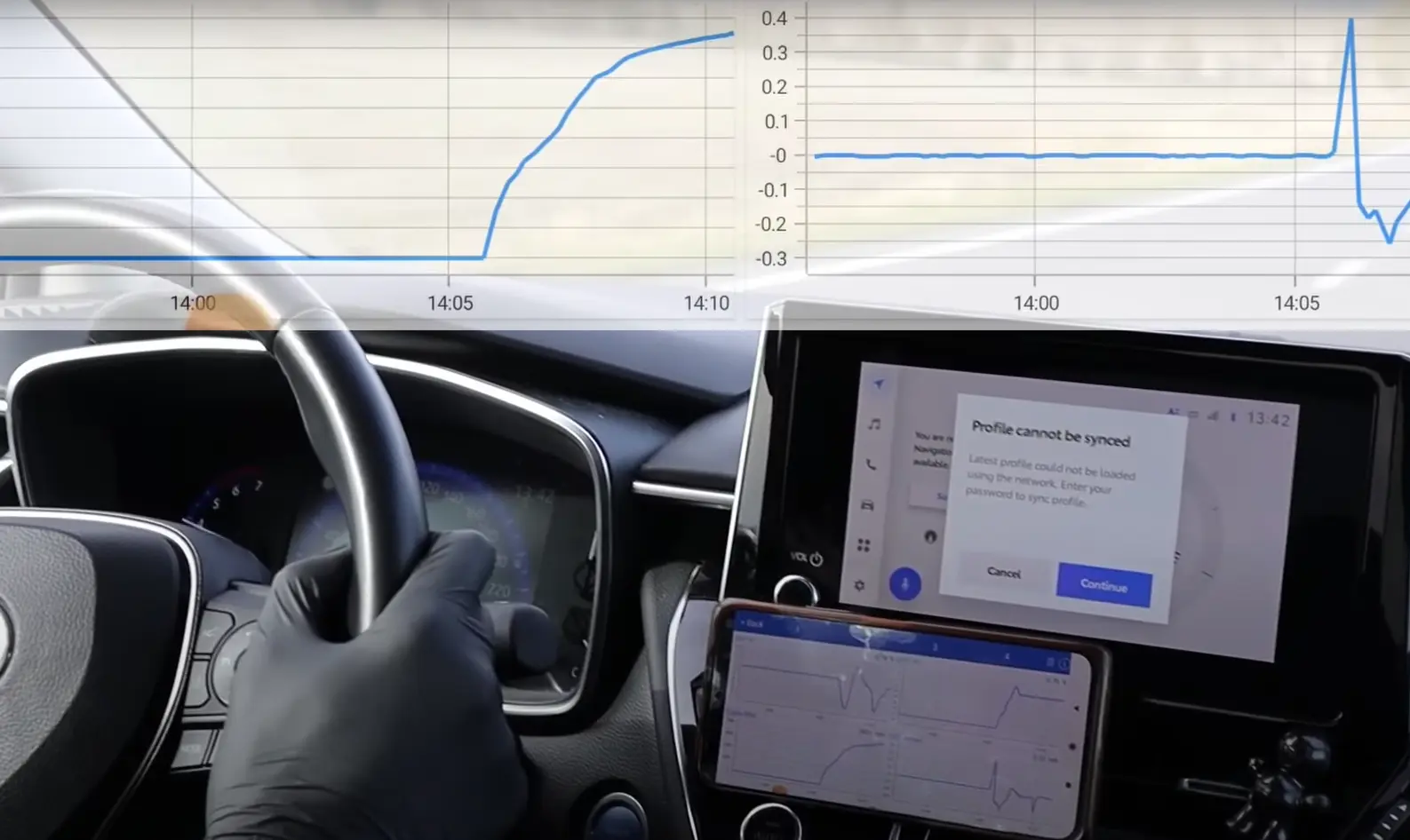What is a volumetric efficiency test?
The volumetric efficiency test is a great way to quickly check the correct operation of your air intake, fuel system, engine internals, and exhaust components, or help you find the issue that caused the failure of this test. It is also called an “engine breathe test,” to check how well can your engine breathe air/fuel and exhale fumes.
Benefits of “VE Test”
- Validates Mass Airflow Sensor accuracy.
- Identifies drivability/powertrain problems.
- Speeds up the diagnosis of issues.
- Helps distinguish between fuel, air, exhaust, and mechanical problems.
How to calculate volumetric efficiency
You will need an OBD2 scanner that can record data, but don’t worry it can be done with a cheap smartphone app like Car Scanner ELM. You will also need to find a suitable road for accelerating the car for several seconds (no pedestrians, or other vehicles). Here is how to do it.
- Warm up the engine to the operating temperature
- Record these pids: RPM, MAG (g/s), IAT, BARO
- Record these for further diagnosis if the test fails: STFT, LTFT, Upstream O2
- Slowly start going forward
- Accelerate at WOT (wide-open throttle), until you reach max RPM or the car shifts to another gear
Input the data into the calculator
Take the frame of recorded data when you had the highest RPM and input these data into a calculator which will calculate the volumetric efficiency of your engine.
For turbocharged engines: Use Intake manifold absolute pressure instead of BARO:

How to interpret volumetric efficiency data
Volumetric efficiency acceptable values differ from engine to engine, but in general, you want to have at least 75%. On some engines that might be a great result, but on some it can be considered low. If you are in the gray area of around 70-75%, consider asking at forums of that specific vehicle to see if the range is normal or if you should look for an issue.
For Diesels and turbocharged vehicles, you want to see value around 90% or more. To diagnose the problem further, monitor the MAF, Oxygen sensor/Air-fuel ratio sensor, and short-term/long-term fuel trims while idling.
Very low VE, high STFT
This can be caused by low compression and since the engine cannot create a low-pressure closed area anymore due to lost compression, the PCM will evaluate it at the engine under load (same as if the throttle was opened even if it isn’t) and increase the fuel injected by raising that fuel trim. You want to do a running compression test to verify the health of your engine head.
Low VE, High fuel trim
If your test shows less than 75%, but your fuel trim is higher than 10%, there is a good chance that either your MAF sensor needs replacement, or you have a vacuum leak in your intake. Fuel Trim is trying to compensate with extra fuel because you have more air coming in. That is either the vacuum leak or the MAF is sending incorrect data. Learn how to diagnose MAF sensors.
Low VE, High STFT, Lean condition
Check your Oxygen or Air/Fuel sensor recorded data. Are you in lean condition? You probably have an issue with your fuel system. Check following:
- Fuel filter
- Fuel pressure
Low VE, normal fuel trim
If you failed your VE test, but fuel trims look normal, there are a few faults that could be causing this. Most likely your exhaust will have some restrictions. Follow up by either diagnosing the catalytic converter or removing the whole exhaust and test-driving the vehicle. There can also be restrictions on your intake or you can have timing issues.

I test OBD-II scanners and make DIY Engine diagnostics guides to help you solve your car problems without having to depend on the mechanic. A lot of them will try to scam you or are just no help at all. About Juraj Lukacko
